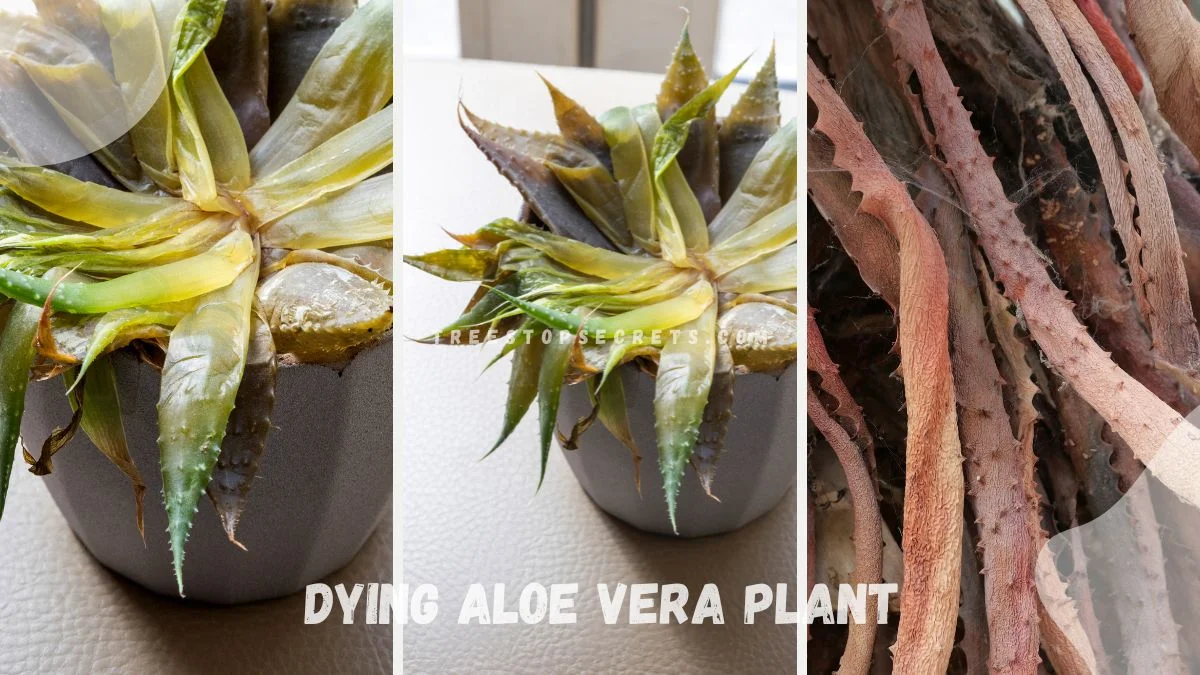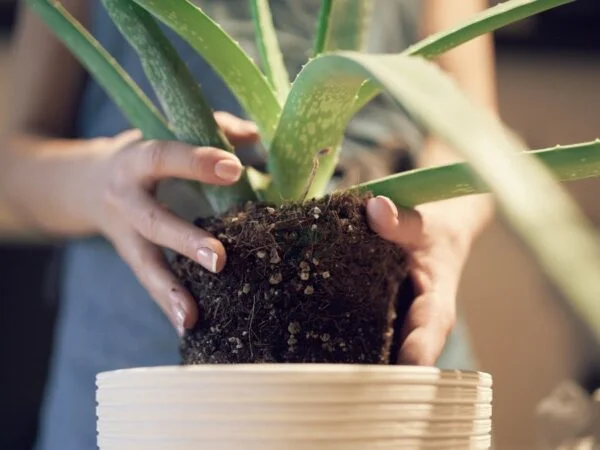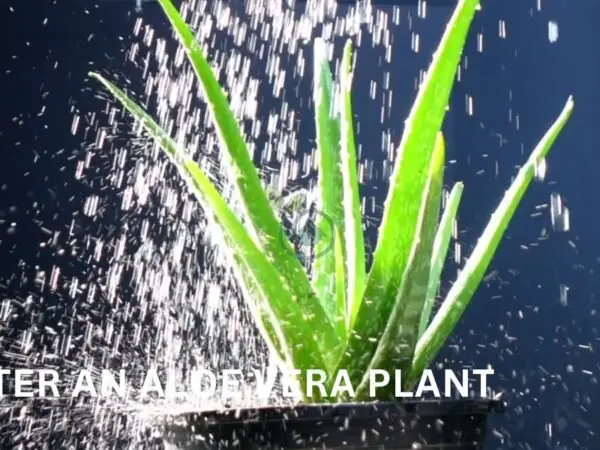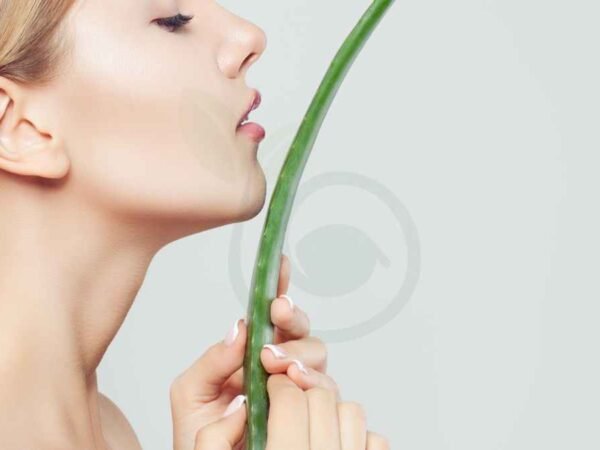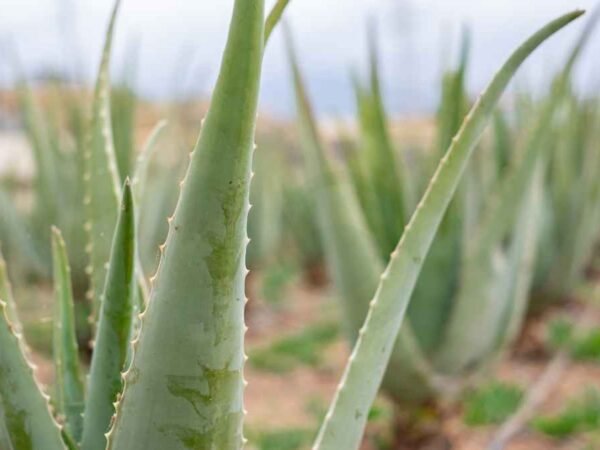If you've noticed your aloe vera plant struggling with diseased leaves and foliage damage, you might be dealing with a dying aloe vera plant. Understanding the reasons behind its decline and learning how to revive it can help bring your beloved succulent back to life.
Key Takeaways
- Understand Aloe Vera Stress: Recognize signs of stress in your aloe vera plant to address issues promptly.
- Identify Common Problems: Learn to spot common problems like overwatering or inadequate sunlight affecting your aloe vera's health.
- Address Water-Related Issues: Adjust your watering routine to prevent root rot and maintain proper soil moisture levels.
- Manage Sunlight and Location: Place your aloe vera in a spot with adequate sunlight and adjust its position as needed for optimal growth.
- Combat Diseases and Pests: Keep an eye out for diseases and pests, and take necessary steps to protect your aloe vera plant.
- Implement Preventive Measures: Regularly fertilize, maintain soil health, prune, and follow proper care practices to prevent your aloe vera from deteriorating.
Understanding Aloe Vera Stress
Sun Stress
Aloe vera plants experience sun stress when exposed to direct sunlight, leading to issues like sunburn. To prevent this, place your plant in indirect sunlight to protect it from harsh rays. Keep an eye out for brown or red leaves, indicating sun stress. Adjust the amount of sunlight the plant receives to ensure healthy growth.
Water Issues
Check soil dryness by pressing your finger into the soil to avoid overwatering, which can harm the aloe vera. Water the plant lightly to prevent waterlogged soil, which can lead to root rot. Depending on where your plant is located and the season, adjust the watering frequency accordingly to maintain optimal moisture levels.
Cold Damage
To prevent cold damage, shield your aloe vera from low temperatures that can harm its health. Watch for signs such as wilting or dark leaves, indicating cold stress. During colder seasons, consider moving your plants indoors to protect them from the damaging effects of cold weather.
Fertilizer Problems
When fertilizing your aloe vera, remember to use fertilizer sparingly to avoid nutrient imbalances that can negatively impact the plant's growth. Keep an eye out for yellowing leaves, which could be a sign of fertilizer issues. Choose a balanced fertilizer specifically designed for succulents to provide them with the necessary nutrients without overwhelming them.
Identifying Common Problems
Browning Leaves
Aloe vera plants often experience browning leaves, indicating issues like overwatering or sunburn. Remove brown leaves promptly to prevent further damage and maintain plant health. Monitor for browning as it can signify underlying problems such as root rot or inadequate light exposure. Adjust your watering schedule and ensure your plant receives adequate sunlight to prevent additional browning.
Diseases and Pests
Regularly inspect your aloe vera plant for signs of diseases and pests to catch any problems early. Promptly treat any infections to prevent them from spreading to the entire plant. Consider using natural remedies or insecticidal soap for pest control while avoiding harsh chemicals that can harm the plant.
Weak Growth
To address weak growth in your aloe vera, ensure the plant receives sufficient sunlight, ideally around 6-8 hours daily. Proper watering is crucial to support growth without overwatering, which can lead to root rot. Prune any leggy stems to stimulate new growth and maintain a healthy appearance.
Stem Issues
Check your aloe vera plant for stem discoloration, which could indicate diseases or nutrient deficiencies. Trim any damaged stems to prevent the spread of issues throughout the plant. If you notice weak stems, provide support with stakes to help them grow upright and strong.
Addressing Water-Related Issues
Underwatering Signs
Aloe vera plants exhibit thin and drooping leaves when underwatered, signaling dehydration. Adjust watering frequency to prevent this issue. If leaves appear shriveled, increase the frequency of watering to revive the plant.
Overwatering Solutions
To prevent root rot due to overwatering, remove excess water from the pot. Repotting aloe vera in well-draining soil helps avoid overwatering problems. Adjust the watering schedule to ensure the soil does not become waterlogged.
Reviving Underwatered Plants
Gradually increasing watering helps revive underwatered plants without shocking them. Trim any dead leaves to stimulate new growth in the aloe vera plant. Monitor the plant closely after adjusting the watering routine to track its progress.
Managing Sunlight and Location
Ideal Sunlight Needs
Place aloe vera in bright, indirect sunlight for optimal growth. Avoid direct sunlight to prevent sunburn. Rotate the plant periodically for even sunlight exposure.
Correcting Sun Stress
Move aloe vera to a shadier spot if sun-stressed. Shield the plant from intense sunlight to prevent damage. Monitor for leaf color changes as indicators of sun stress.
Low-Light Solutions
Choose aloe vera varieties that tolerate low light conditions. Supplement natural light with grow lights if necessary. Avoid placing the plant in dark corners to maintain health.
Combating Diseases and Pests
Identifying Pests
Pests like spider mites and aphids are common culprits in aloe vera plant infestations. Look for these pests on the leaves. Check for sticky residue left behind by pests, indicating their presence. Inspect the undersides of leaves where pests often hide from plain sight.
Treating Diseases
Combat common plant diseases with natural remedies such as neem oil, known for its effectiveness. To prevent disease spread, isolate infected plants from healthy ones. When dealing with diseased areas, prune affected parts and dispose of them properly to contain the issue.
Preventive Measures
To maintain a healthy aloe vera plant, practice good watering habits to avoid potential issues. Implementing proper watering techniques can help prevent diseases and pest infestations. When introducing new plants, it's crucial to quarantine them initially to ensure they are free from pests that could harm existing plants. Regularly clean your pruning tools to prevent the transmission of diseases between plants.
Fertilization and Soil Health
Fertilizer Use
Applying a balanced fertilizer is essential for aloe vera plants during the growing season. Follow the recommended dosage carefully to prevent fertilizer burn. Opt for a fertilizer with higher phosphorus content to encourage flowering in your aloe vera.
Soil Type
For optimal growth, ensure you use well-draining soil mixed with sand when planting aloe vera. Avoid heavy soils that trap moisture, as they can lead to root rot. Consider incorporating perlite into the soil mixture to enhance drainage and prevent waterlogging.
Repotting Tips
To maintain the health of your aloe vera plant, repot it every 2-3 years to refresh the soil and provide more space for growth. When repotting, select a slightly larger pot with adequate drainage holes to prevent water accumulation. Gently loosen the roots during repotting to stimulate new growth and ensure the plant's vitality.
Pruning and Maintenance
Trimming Brown Leaves
Trim brown leaves near the stem to enhance the plant's appearance. Use sharp scissors to prevent damage. Dispose of removed leaves properly to avoid contamination.
Regular Care Routine
Establish a consistent watering schedule for your aloe vera plant. Rotate it periodically for even growth. Regularly inspect the plant for any signs of distress.
Monitoring Plant Health
Observe changes in leaf color or texture as health indicators. Track watering and sunlight conditions for optimal care. Address any issues promptly to maintain the plant's health.
Revival Techniques for Dying Aloe Vera
Rejuvenating Techniques
Prune leggy stems to stimulate new growth by cutting them back close to the base. This encourages the plant to focus its energy on healthier, more compact growth. Repotting aloe vera in fresh soil is essential for rejuvenation as it provides the plant with new nutrients and space to grow. Ensure the new pot has proper drainage holes to prevent overwatering.
- Prune leggy stems
- Repot in fresh soil
- Provide optimal growing conditions
Recovery Signs
Watch for new growth emerging from the center of the plant, indicating that it is recovering. Improved leaf color and texture are positive signs of recovery, showing that the plant is absorbing nutrients and water effectively. Consistent care routines, including proper watering and sunlight exposure, are crucial for the aloe vera's full recovery.
- Look for new growth
- Monitor leaf color and texture
- Continue with proper care routines
Long-Term Care
Maintain a consistent care routine to ensure the long-term health of your aloe vera plant. Regularly check for any changes in growth patterns, such as leggy stems or discoloration, and adjust your care practices accordingly. Repotting aloe vera every 2-3 years helps refresh the soil and provides the plant with essential nutrients for continued growth.
- Maintain consistent care routine
- Monitor growth patterns
- Repot periodically to refresh soil
Preventive Measures for Healthy Aloe Vera
Ideal Growing Conditions
To ensure healthy aloe vera growth, place the plant in an area with bright, indirect sunlight. This setting promotes optimal development without causing harm. Water the aloe vera sparingly to prevent root rot, allowing the soil to dry out between watering sessions. Maintain moderate temperatures around the plant to support its overall health.
Regular Monitoring
Regularly check for signs of pests or diseases on your aloe vera plants to address any issues promptly. Monitor the soil moisture levels to prevent overwatering, which can lead to root rot and other problems. Inspect the leaves frequently, looking for color changes as important indicators of the plant's well-being.
Seasonal Adjustments
Adjust the watering frequency of your aloe vera based on seasonal changes to accommodate varying needs. During winter, protect the plant from extreme temperatures that can harm its health. Provide extra sunlight during darker winter months to supplement the reduced natural light.
Closing Thoughts
After learning about the various stressors that can affect your aloe vera plant and exploring ways to address these issues, you are now equipped with the knowledge to nurture and revive your beloved succulent. By understanding the common problems, implementing proper care techniques, and being proactive in disease prevention, you can ensure the health and vitality of your aloe vera plant for years to come.
Remember, consistent monitoring, timely interventions, and a little extra care go a long way in maintaining a thriving aloe vera plant. By following the tips outlined in this guide and staying attentive to your plant's needs, you can enjoy a beautiful and flourishing aloe vera that adds greenery and freshness to your space.
Frequently Asked Questions
How can I identify if my aloe vera plant is stressed?
Aloe vera plants show signs of stress through discoloration, wilting leaves, or soft spots. Monitor the plant for changes in appearance and texture to detect stress early.
What are common problems that affect aloe vera plants?
Common issues include overwatering leading to root rot, inadequate sunlight causing leggy growth, and pest infestations like mealybugs. Regularly inspect your plant for these problems.
How do I address water-related issues with my aloe vera plant?
Ensure proper drainage by using well-draining soil and pots with drainage holes. Water aloe vera plants sparingly, allowing the soil to dry out between waterings to prevent root rot.
What are some effective revival techniques for a dying aloe vera plant?
To revive a dying aloe vera, assess the root health, trim off any rotted parts, repot in fresh well-draining soil, provide adequate sunlight, and adjust watering frequency. Monitor progress closely.
What preventive measures can I take to maintain a healthy aloe vera plant?
Prevent issues by maintaining proper watering practices, providing sufficient sunlight, avoiding overcrowding in pots, inspecting for pests regularly, and ensuring good air circulation around the plant.
Image Source: Paid image from CANVA

